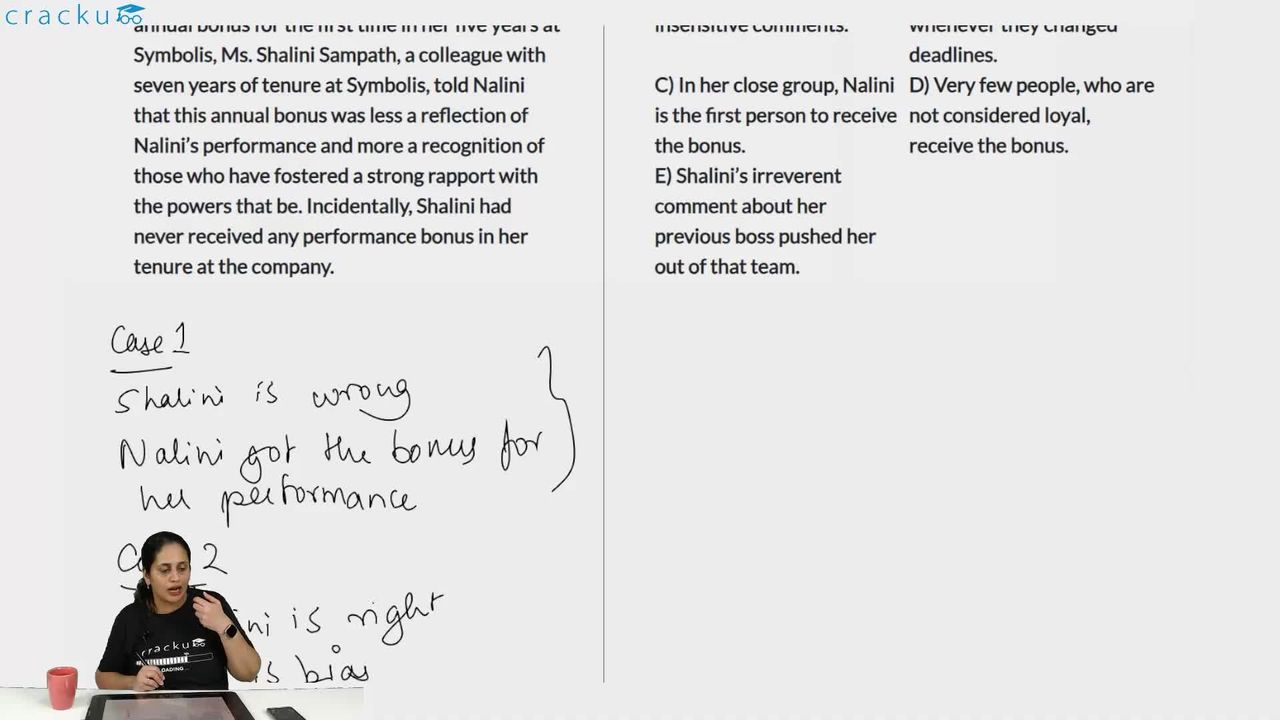Read the following scenario and answer the THREE questions that follow.
In Symbolis, an upcoming medium sized IT services organization, only 1% of the employees were awarded an annual performance bonus. This annual performance bonus was decided by a committee formed of different functional heads. When Ms. Nalini Kattakayam received the annual bonus for the first time in her five years at Symbolis, Ms. Shalini Sampath, a colleague with seven years of tenure at Symbolis, told Nalini that this annual bonus was less a reflection of Nalini’s performance and more a recognition of those who have fostered a strong rapport with the powers that be. Incidentally, Shalini had never received any performance bonus in her tenure at the company.
A significant project recently arrived at Symbolis, and Nalini was chosen to spearhead it. She was given the autonomy to create her own team to collaborate and drive this project to success. Nalini wanted to build a team where each of the team members worked with great comradery. As Shalini had previous experience of working with the client, Nalini offered her to join the team. However, Shalini expressed her willingness to work on the project only on the condition that she would be appointed as a team leader.
Nalini was aware that the client was very difficult to work with. Of the three previous projects with the client, only the one, where Shalini was a team member, was successfully completed.
What should be the BEST course of action for Nalini regarding the inclusion of Shalini in the team?
Option B is the best course of action for Nalini regarding Shalini's inclusion in the team. It encourages open communication and negotiation, which are key to resolving conflicts and misunderstandings in a professional setting. Nalini can explain the project's importance and how Shalini’s experience and skills can contribute to its success.
Option A: This could potentially escalate the situation and create further tension between Nalini and Shalini.
Option C: This undermines Nalini’s authority and autonomy as the chosen leader for the project.
Option D: This could escalate the situation and might not resolve the issue at hand. It’s generally better to try and resolve conflicts directly with the person involved before involving HR.
Option E: This might not be effective because it doesn’t address Shalini’s concerns or her desire to lead the team. Forcing Shalini to join the team without addressing these issues could lead to a hostile work environment and might not contribute to the success of the project.
Video Solution

Create a FREE account and get:
- All Quant Formulas and shortcuts PDF
- 15 XAT previous papers with solutions PDF
- XAT Trial Classes for FREE




